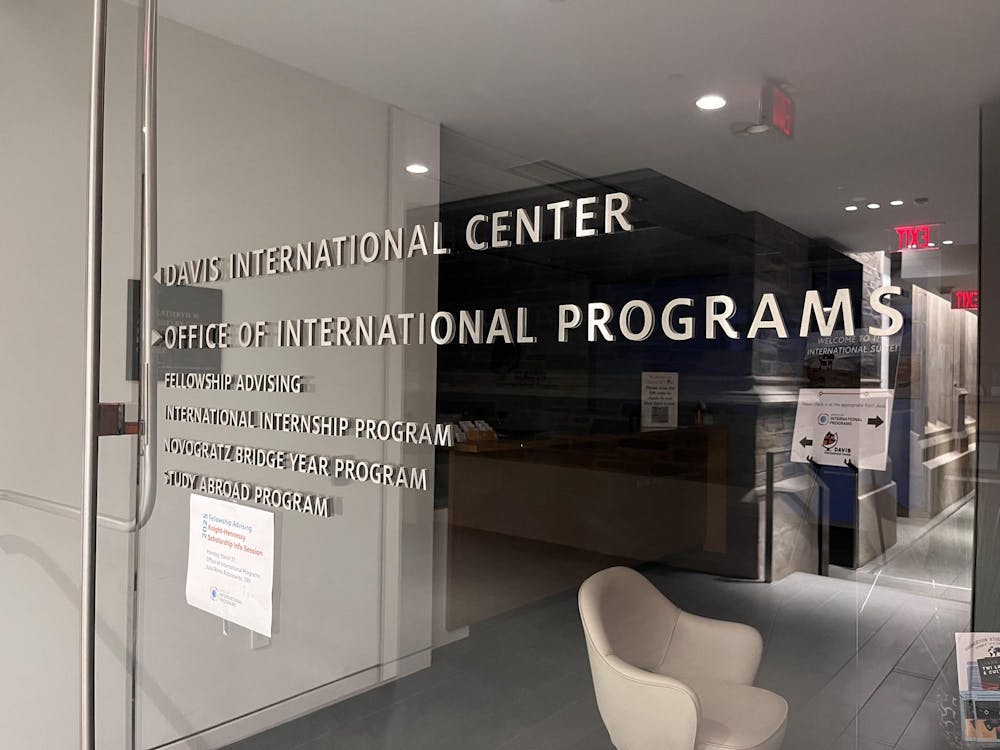The University's undergraduate admission office witnessed a large drop in early decision applications received this fall, the number declining by between 23 and 25 percent from last year, Dean of Admission Janet Rapelye said.
The decline follows last year's all-time high, when the office received 2,350 early applications for the Class of 2007, an increase of 11 percent over the Class of 2006.
Though Rapelye confirmed the University had received fewer early applications this year, she warned that the figure is merely an approximation and that last-minute submissions and a postal workers' strike in the United Kingdom mean applications are still trickling into 110 West College.
Harvard, Yale and Stanford universities all saw significant changes in their early application numbers as well, The New York Times reported.
Harvard saw early numbers drop 47 percent while Yale and Stanford witnessed the opposite swing, with their early numbers rising 42 and 62 percent respectively.
Some admissions officials and college counselors said they believe this year's fluctuation in applicant numbers has to do with the revamped structure of early admissions programs at these schools.
Last year, both Yale and Stanford had early decision programs that required applicants to matriculate if accepted. This year, however, both schools switched to single-choice early action programs, meaning applicants could apply early to only one school, but acceptance was not binding.
Harvard, which experimented last year with a very liberal "multi-choice" early action plan — applicants could apply early to as many other schools as they wanted —reverted to a single-choice early action program this year.

Harvard admissions dean William Fitzsimmons told The Harvard Crimson he believes the school's drop this year is due entirely to the new restrictions imposed on applicants.
Analyzing Princeton's drop, Rapelye acknowledged the possibility that more high school students applied early action to Yale and Stanford this year instead of early decision to Princeton because they did not want to commit to the University's binding early decision program.
But Rapelye says she sees this change as positive.
"I'm actually quite pleased," she said, explaining that if the University lost 23 percent of its traditional applicant base to Yale and Stanford because of those schools' new early action programs, then those students were applying to Princeton not because it was their first choice, but rather because they sought a strategic admissions advantage.

The remaining applicants in the early pool are therefore stronger because they are likely applying to Princeton because it is truly their first choice, Rapelye said.
A debate renewed
The new early admissions policies of Harvard, Yale and Stanford have reopened a popular debate about early admissions.
Arthur Thomas, director of college counseling at the nearby Lawrenceville School, said he opposes the new single-choice early action policy adopted by Harvard, Yale and Stanford.
"The change made to the single-choice [program] is a bad one," he said. "It would be better handled by saying that we're going [early decision]. All this gamesmanship that is going on [would come to an end]."
Bruce Brimer, director of college counseling at the Collegiate School in New York City, agreed with Thomas.
"High-end" applicants who apply early action to one of Harvard, Yale and Stanford and are accepted are still likely to apply in the regular decision round anyway, Brimer argued, thereby increasing competition and increasing admissions officials' workload.
"It doesn't make any sense to have gained admission into places where spots are so precious," Brimer said, only to then "turn around and apply indiscriminately to other places. This is confusing the issue more than it's simplifying it. It's not healthy [for students]."
Though they are opposed to early action programs, both Thomas and Brimer strongly support Princeton's early decision program.
"Princeton is doing it exactly the way it should be done," Thomas said. "They're saying, 'If you know that we're right for you, apply early. If we accept you, join us.' It's a real commitment. If everyone operated on the same basis, the kids would have a much easier time . . . The gamesmanship would be reduced."
But David Matthews, a college counselor at Upper Canada College in Toronto, Canada, said he sees little distinction between early decision and early action.
"A college moving from early decision to early action doesn't really solve the basic problem, which is that early plans of either type force students to make decision prematurely," Matthews said. "The ideal situation would be that all early applications would be abandoned, with nobody being advantaged simply by applying at an earlier time, which is clearly what's happening now."
Rapelye understands this sentiment. Therefore, the bigger question when it comes to early admissions at institutions like Princeton, she said, is whether colleges should "mend it or end it."
"Everyone who sits in my position [at Princeton's peer institutions] feels the responsibility to think about the balance between supporting the interests of our institutions and making [the admissions process] fair for students," she said. "It's a hard balance."







